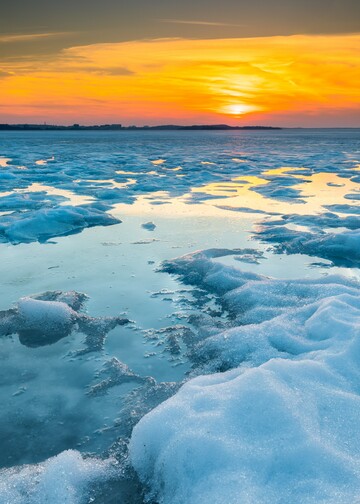What are the three states of matter?

Melting polar ice illustrates the three states of matter: solid (ice), liquid (water), and gas (air).

Melting polar ice illustrates the three states of matter: solid (ice), liquid (water), and gas (air).
Everything in the world around us is made up of matter. Matter is anything that has mass and takes up space. There are three states of matter: solids, liquids, and gases.
Let's start with solids. Solids are things you can touch and feel. They have a definite shape and size. Some examples of solids are a book, a toy, and a pencil. A book has the same shape and size no matter where you put it. This is because it's a solid.
Now, let's talk about liquids. Liquids are things that pour and flow. They don't have a definite shape, but they have a definite volume. Volume is how much space something takes up. Some examples of liquids are water, milk, and juice. When you pour water into a cup, it takes on the shape of the cup.
Last but not least, let's talk about gases. Gases are things that you can't see or touch. They spread out to fill the space they're in. Some examples of gases are air and helium. When you blow up a balloon with helium, the helium flows out to fill the balloon.
So, to recap, we have solids which are things you can touch and feel with a definite shape and size, liquids which pour and flow with a definite volume, and gases which are things you can't touch or see and spread out to fill the space they're in. Isn't it amazing how much you can learn about the world around us?
What are some ways to change the state of matter?
Matter can change from one state to another when we add or take away heat. This is called changing the state of matter. For example, if you take an ice cube out of the freezer and leave it on the counter, it will change from a solid to a liquid as it melts. This is because the heat from the room makes the ice cube warmer and it turns into water. So, adding heat can change a solid into a liquid, and we call this process melting.
What are the properties of solids?
Solids have some special properties. One property of solids is that they have a definite shape. This means that a solid will always keep the same shape no matter how you move it. For example, if you have a toy car, it will stay the same shape whether you hold it upright or sideways. Another property of solids is that they have a definite volume. Volume is how much space something takes up. If you have a box full of toys, the volume of the box is the same no matter how you stack the toys inside.

Melting polar ice illustrates the three states of matter: solid (ice), liquid (water), and gas (air).